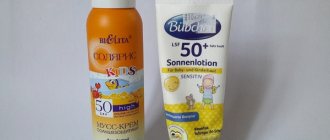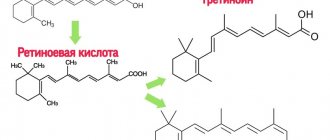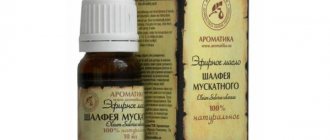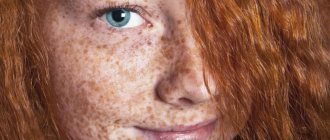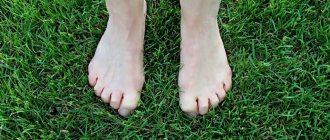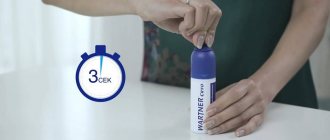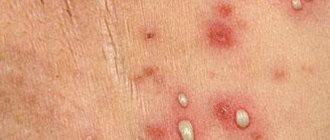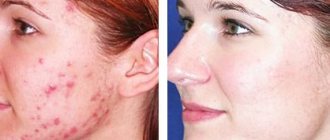The sun is our friend and enemy at the same time. A friend - because without the sun there would be no life on Earth, and because under the influence of ultraviolet radiation, vitamin D is formed in the body. And an enemy - because solar radiation leads to premature aging of the skin, the appearance of age spots and neoplasms.
Does this mean that you need to sit at home, hiding from the sun's rays? Of course not. You just need to follow safety measures - use sunscreens correctly (sanblocks, sunscreens). So let's talk about them!
Who needs sunscreen?
This answer can be answered briefly - everyone. People of any age and gender, with any skin tone, need protection from ultraviolet radiation.
There is a rather harmful myth that sunscreen cosmetics are only needed by white-skinned people. This is not entirely true. Indeed, the darker the skin, the lower the risk of melanoma, so dark-skinned people do not need to use sunscreens to prevent cancer. But for the prevention of other (non-melanoma) types of cancer, aging, and deterioration of skin quality, sunscreens are useful to absolutely everyone.
Cream, spray or lotion?
| GENERAL RECOMMENDATIONS FOR CHOOSING SUN PROTECTION PRODUCTS BY SKIN TYPE: 1. For normal to dry skin, lotions or creams are best. 2. To protect oily and combination skin from the sun, dermatologists recommend using products in the form of light lotions or gels without alcohol or oils. |
You probably spent quite a lot of time searching for the perfect facial skin care products.
And this is not surprising, since facial skin is capricious and requires proper care, taking into account all its features. The situation is similar with the selection of products for the skin of the body. In order to choose the right sunscreen for your body, you need to determine your skin type. Appropriate descriptions and recommendations may be indicated on the sunscreen packaging. If they are absent, then you need to conduct a little empirical research yourself: take several samples of products that you think may suit you. After some time, make a list of pros and cons based on your feelings about each product.
How does the sun affect the skin?
There are two types of ultraviolet rays:
- UVA penetrates the skin relatively deeply, forms aggressive molecules (free radicals), damages the skin and disrupts the normal functioning of its cells. According to some reports, type A rays can cause skin cancer. They are equally dangerous for people with different skin colors.
- UVB penetrates to a shallow depth, but can damage cell DNA, causing mutations and cancer (primarily melanoma). These rays cause burns to the epidermis. The lighter the skin, the greater the danger such rays pose to it.
Under the influence of UVA, additional melanin is produced - the skin acquires a golden or brown tint. For almost a century, tanning was considered a sign of health and was fashionable. Girls who wanted to meet the beauty standards of the 20th century spent many hours on the beach or in the solarium to give their skin the desired shade. Now the attitude towards tanning has changed. It has been proven that ultraviolet rays not only cause skin cancer, but also lead to premature aging by destroying collagen.
There is a special term “photoaging”, which refers to changes in the skin that occur under the influence of external factors, primarily ultraviolet radiation. Unlike normal aging (chronoaging), such changes are possible at a relatively young age, especially in those who like to sunbathe. But the good news is that they can be prevented by protecting yourself from the sun.
Chemical principle of operation of a UV filter (absorbing)
Filters of this operating principle absorb UV radiation and annihilate it, converting it into energy that is safe for the skin. Chemical UV filters include cinnamate, octocrylene, butylmethoxydibenzoylmethane (avobenzone), benzophenone-2 (oxybenzone) and others.
They have many advantages: they leave a feeling of lightness and freshness on the skin after use, have a variety of release forms (for example, gel), but effectively protect only from UVA rays, and even products with a low SPF factor cope well with this function (below 20).
The disadvantage of these active ingredients is that each of them blocks only part of the radiation, and when used separately they are not very light-stable. Therefore, it is necessary to use products containing several types of chemical filters. Also, products with chemical filters can cause burning, itching of the skin, and eye irritation.
How does UV protection work?
Cosmetics that protect the skin from ultraviolet radiation are an emulsion to which active ingredients are added - physical and chemical filters that block the effects of rays.
The physical barrier is created using zinc oxide or titanium dioxide. These compounds reflect and scatter the sun's rays. Modern creams use nanoparticles, which ensure rapid absorption of products and the absence of white streaks on the skin.
A chemical barrier is a substance containing carbon atoms that absorbs ultraviolet light. Some target type A rays, others focus on type B rays. The most common chemical filter is oxybenzone.
An emulsion is a homogeneous mixture of fat and water. The product may also contain moisturizing ingredients, antioxidants, flavors and other components.
Abbreviation PA (Protection Grade of UVA) The PA index is used in Asian countries, particularly Korea and Japan, as an indicator of the degree of protection against UVA. The higher this indicator, the more “+” signs there are after the letters “PA”. PA+, PA++, PA+++ - weak, medium, strong.
PPD (Persistent Pigment Darkening - persistent darkening of pigment). This rating is used in Europe to indicate the degree of UVA protection. The PPD indicator has a numerical value (2-4, 4-8, 8-16, 16-32) and the higher it is, the stronger the protection. We can say that PA+, PA++, PA+++, PA++++ are analogous to the PPD indicator.
| RA indicator | PPD indicator |
| PA+ | 2-4 |
| PA++ | 4-8 |
| PA+++ | 8-16 |
| PA++++ | 16-32 |
The abbreviation SPF stands for Sun Protector Factor and shows how much of the radiation passes through the screen and reaches the skin. For example, when using SPF30 cream, only 1/30 of the rays reach the skin. Accordingly, such a sunscreen filters 96.7% of radiation. A product with SPF50 filters 98% of radiation. Thus, the difference between these products is not as great as the manufacturers try to present it.
Review of popular sunscreens with PPD
Based on consumer reviews, information from manufacturers and online stores selling sunscreens with PPD, we have compiled a review of the most popular products.
You can buy products with PPD at a pharmacy, cosmetics department or online store.
Badger Company, Zinc Oxide Sunscreen Cream, SPF 30
The presence of PPD is indicated by the broad spectrum marking. It is valued by consumers for its natural composition (98% comes from organic ingredients). The description indicates PA+++, that is, PPD is approximately 8–16, that is, approximately 1/3 of the stated SPF 30. Disadvantage: leaves whitish streaks on the skin.
Badger Company, Zinc Oxide Sunscreen Cream is valued for its natural composition
Active ingredients: zinc oxide, sunflower seed oil, beeswax, vitamin E, sea buckthorn extract.
The approximate cost for 2022 is 1050 rubles.
La Roche-Posay, Anthelios XL, SPF 50+/PPD 42
An ultra-light facial fluid that is suitable even for allergy-prone and sensitive skin. The special formula remains active when in water for 40 minutes.
Among the advantages, consumers note convenient application, lack of greasy shine, good sun protection and economical consumption. Among the disadvantages are “whitening” of the skin and stains after application, which have to be carefully shaded.
La Roche-Posay, Anthelios XL, SPF 50+/PPD 42 contains the highest level of protection against type A rays currently possible
Active ingredients: broad spectrum ray filters, thermal water.
The approximate cost for 2022 is 1,700 rubles.
I bought La Roche Posay sunscreen at the pharmacy. The main selection criterion was this: a high level of SPF protection and definitely PPD. Since I live in the middle zone, and I walk with my child from 1 to 3 hours, I bought SPF 30, not 50. I have combination skin, and many protective creams are oily, so I decided to take the option for oily skin, so as not to get an unpleasant shine There really was no shine from it. It even dried out my skin a little. The biggest surprise was that it whitens the skin. Moreover, it is quite difficult to apply evenly; you have to carefully shade it. Otherwise, you can walk striped. This is a huge minus because of which I will not buy it again. The texture of the cream is liquid, you definitely need to shake it. It lasts a long time. The bottle didn't run out over the summer.
ayguli
https://irecommend.ru/content/krem-s-zashchitoi-spf-i-ppd-vybelivinie-v-odnom-flakone
Vichy, Capital Ideal Soleil, SPF 50+
The product provides protection against broad spectrum rays, and also evens out the complexion and blocks the pigmentation process. Has a mattifying effect, leaving a powdery effect. Some users note the following disadvantages: “streaking” when applied, unpleasant odor, and if you sweat excessively, you have to renew it frequently.
Vichy product leaves a powdery effect on the skin
Active ingredients: filters from rays A and B, hyaluronic acid, vitamin E, licorice root and ginger root extract, thermal water.
The approximate cost for 2022 is 1300 rubles.
SkinCeuticals, Brightening UV Defense, SPF 30
Fights excessive pigmentation and provides good hydration. It has a pleasant smell and light texture. Some users report an oily shine after using the product, which even powder does not hide.
SkinCeuticals, Brightening UV Defense can be used as a quality makeup base
Active ingredients: sun filters, HYPERBRIGHT complex (reduces excess pigmentation).
The approximate cost for 2022 is 2200 rubles.
Kiehl's, Activated Sun Protector For Face, SPF 50
Facial lotion with broad-spectrum sun protection properties. Waterproof, non-greasy texture, suitable for use on the beach. Convenient packaging, economical consumption. Does not contain silicones, parabens, fragrances or oils. Among the disadvantages, it is noted that the cream leaves a greasy film on the skin and in hot weather this creates some discomfort.
Kiehl's, Activated Sun Protector For Face is free of silicones and parabens
Active ingredients: sunscreens, stearic acid, linalool, coumarin.
The approximate cost for 2022 is 2200 rubles.
Garnier, Ambre Solaire “Expert Protection”, SPF 50
Suitable for sensitive skin of the face and body thanks to the hypoallergenic formula. It is quickly absorbed, does not leave the feeling of a greasy film, and is consumed economically. Among the disadvantages, consumers note that the texture is too dense, an unpleasant odor, “whitening” of the face, and the rapid appearance of an oily sheen.
Garnier, Ambre Solaire impresses with its affordable price, but has an unpleasant odor and “whitens” the face
Active ingredients: sunscreens, vitamin E.
The approximate cost for 2022 is 750 rubles.
Jan Marini, Skin Research Antioxidant Daily Face Protectant
The product is quickly absorbed and waterproof. Does not leave a greasy film, controls sebum secretion, and provides a moisturizing effect. Among the disadvantages is the high cost of the product.
Antioxidant Daily Face Protectant provides good moisturizing effect
Active ingredients: sunscreen filters, hyaluronic acid, glycerin, photomelanin extract.
The approximate cost for 2022 is 3,500 rubles.
Obagi Nu-Derm Healthy Skin Protection SPF 35
Can be used as a base for makeup; the oily shine that remains after application quickly disappears. Comfortable for dry and normal skin. Those with oily epidermis consider the disadvantages to be that the texture is too dense and note that the product can clog pores.
Obagi Nu-Derm Healthy Skin Protection SPF 35 May Clog Pores
Active ingredients: sun filters.
The approximate cost for 2022 is 3,000 rubles.
Clinique, Super City Block Oil-Free Daily Face Protector SPF 40
Applies evenly, does not clog pores, is long-lasting, suitable for those who play sports outdoors. Most reviews about the cream are positive, users note the following advantages: light texture, pleasant smell, effectiveness, economical, works well as a base for makeup. However, it may not protect against increased pigmentation if there is a tendency to it.
The product from Clinique has earned a lot of positive reviews
Active ingredients: sunscreens, vitamins E and C, rosemary, kelp and gentian extracts, quartz, bisabolol.
The approximate cost for 2022 is 2000 rubles.
I use this cream in the summer instead of regular foundation, even the smell is not irritating and I like the consistency.
Green T
https://www.rutalk.co.uk/archive/index.php/t-105676.html
Shiseido, Ultimate Sun Protection Cream SPF 55 PA+++
The cream is stable, works well in water and under cosmetics, and does not leave white streaks on the skin. Thanks to its loose consistency, it applies well and is quickly absorbed.
Thanks to its successful texture and durability, Shiseido's product is appreciated by consumers
Active ingredients: sunscreens, stearic acid, linalool, plant extracts.
The approximate cost for 2022 is 2,700 rubles.
Video: cosmetologist review of products with PPD
SPF is a measure of UV blocking
| SPF | % UV blocking | % Penetration of rays into the skin |
| 15 (14/15) | 93 | (7%) 1/15 |
| 30 (29/30) | 97 | (3 %) 1/30 |
| 50 (49/50) | 98 | (2 %) 1/50 |
| 90 (89/90) | 98,8 | 1/90 (1,2 %) |
Simply put, with proper use of a lotion with SPF15, you can stay in the sun 15 times longer than without them, and when using products with SPF50 - 50 times longer. However, these are theoretical calculations, but in reality it is still not recommended to sunbathe for hours, since the risk of burns increases with every hour - also because rarely does anyone use the cream correctly.
Research on sunscreen lotions (see Sunscreens).
Types of sun rays
Modern science divides the sun's rays into three categories:
- UVC
- UVB
- UVA
Experts consider the first study option to be very dangerous, since these rays are the “shortest”. They are absorbed by the ozone layer without reaching the earth's surface. UVC radiation is called the most aggressive, so you should protect yourself from it more carefully.
UVB rays are no less dangerous. Thanks to this radiation, a person gets a natural tan, and at the same time, sunburn. This type of radiation is perfectly blocked by glass and clothing. This suggests that even light wardrobe items, as well as sunglasses, can be an excellent defense against an “attack.” The effects of this category of radiation can be observed immediately: redness of the skin, the appearance of blisters indicating burns.
The most aggressive and extremely dangerous rays include UVA radiation. Its impact cannot be stopped by wardrobe items or window glass. It is these rays that attack even the very deep layers of the epidermis.
The peculiarity of UVA rays is that they cause photoaging of the skin, since they have a negative effect on elastin, as well as collagen fibers, which are extremely important for humans.
In this regard, the harmful effects of these rays (including the formation of new moles, age spots, deterioration of skin condition) appear with some delay (usually at the end of the season).
UVA rays allow you to get a tan, but it appears after a certain time (up to 3 days). This “slow” tan lasts much longer.
UVB and UVA rays have a very bad effect on the body because:
- capable of destroying DNA structure;
- negatively affect the functioning of the immune system;
- cause skin cancer.
In addition, the mentioned types of rays are the culprits of photoaging, as well as photodermatoses.
How to choose the right cream?
- It is recommended to choose broad-spectrum cosmetics that will protect against all types of rays. The packaging of the product should have the appropriate O, “PPD/SPF” or simply “UVA+UVB”). Also, the most effective varieties are those that combine chemical and physical protection.
- The lighter the skin, the higher the protection factor should be. Those who find it difficult to independently determine their Fitzpatrick skin type (your phototype) should consult a specialist. Any cosmetologist can easily cope with this task and recommend suitable products.
- Like other cosmetics, it is better to buy sunscreens at a pharmacy rather than at the nearest supermarket. A cosmetologist will help you choose the right brand depending on your skin type.
- Sunscreen cosmetics can be called both “for tanning” and “anti-tanning”. As a rule, the first name is used for products with a low protection factor, and the second for products with a high one. It is worth remembering, however, that any tan signals photodamage. It is safest to use self-tanning lotions.
- Before applying sunblocks, many experts recommend using creams and serums with antioxidants for additional skin protection.
- The texture and characteristics of different products may vary significantly. For the face, it is recommended to use special creams marked accordingly - they do not clog pores and usually additionally include moisturizing and antioxidant components.
30−40−50, who is more?
We've figured out the mysterious acronyms, but how do you navigate the numbers: SPF 30, SPF 40, SPF 50? It is recommended to choose the degree of protection based on your skin phototype. If you have exceptionally white skin and burn quickly, then you need to use a cream with the highest possible degree of protection. According to various estimates, these are products with an SPF index of 30 - SPF 50.
If you quickly acquire an even tan, then in the first days in bright sun you should use creams SPF15 - SPF 20. After the skin gets used to ultraviolet rays, you can switch to SPF 8 - SPF 10.
If nature gave you dark skin at birth, that’s great, but the danger of getting sunburned still remains. At the beginning of the summer season, use a cream with SPF 10 - SPF 15, later you can reduce the degree of UVB protection to 4. There are six skin phototypes in total. By answering just nine test , you will be able to accurately determine your phototype and select the degree of protection you need.
When should you protect your skin from the sun?
It is recommended to apply Sanblock to open areas every time you go outside from dawn to dusk. At night you can do without protective lotion, but on a cloudy day you cannot neglect it, since a certain amount of ultraviolet rays penetrate through the clouds.
The sun is considered the most dangerous in spring and summer.
Will using sunscreens lead to vitamin D deficiency?
Sunscreen cosmetics, by blocking ultraviolet rays, can interfere with the production of vitamin D. However, this is not a reason to refuse sunscreens. Contrary to popular belief, it is not necessary to fry for hours in the direct rays of the sun to produce the vitamin - a 15-minute walk on a sunny morning or before sunset is enough. In addition, in case of hypovitaminosis, additional medications are recommended.
Scientists' studies show that vitamin D is produced equally well in those who use sunscreen lotion and in those who do without it during everyday activities (The Effect of Sunscreen on Vitamin D).
What are SPF and PA?
Creams with UV filters not only save you from sunburn, they also protect your skin from aging and cancer. It is very important when purchasing a sunscreen to make sure that it provides good protection from both UVA and UVB rays. The surest way to know the effectiveness of a sun cream is to read its ingredients. For the convenience of consumers, two indicators are used (SPF and PA), which indicate the degree of protection of a particular product. But many still do not know what these indicators mean.
Are sun protection cosmetics harmful?
From time to time, reports appear in the press about the dangers of sunscreen cosmetics. In particular, such products are accused of the fact that the compounds they contain overcome the epidermal barrier and penetrate into the blood. For example, according to some data, oxybenzone can pass through cell membranes and interfere with the natural production of hormones in the body. This information was obtained through experiments, but repeated tests have not proven that oxybenzone is dangerous to humans. A person would need to use it for 277 years to experience any negative effects from using sunscreen.
The toxicity of physical filter nanoparticles has also not been confirmed (see Literature Review on the Safety of Titanium Dioxide and Zinc Oxide Nanoparticles in Sunscreens).
This way, there is no need to worry that using lotions with SPF will lead to unpleasant consequences (The Science of Sunscreen). The benefits of such cosmetics do not raise doubts among scientists. So feel free to use sunscreen lotions to protect your skin.
Physical principle of operation of a UV filter (reflective)
Very small particles are applied to the skin, which reflect the sun's rays. Such products use two active ingredients - titanium dioxide and zinc oxide, while the remaining active sunscreen substances can be classified as chemical. Physical sunscreens reflect UVA and UVB rays and can also reflect infrared radiation. They cause almost no irritation and are suitable even for delicate infant and child skin.
The downside is that the higher the content of active ingredients (and, accordingly, the higher the SPF factor), the greater the discomfort from their use: white marks on the skin, clogged pores, a sticky feeling. With a small content of active ingredients (SPF below 30), the feeling of use is more comfortable, but the protection against UVA rays (PA+, PA++) is insufficient.
Of the two filters mentioned above: titanium dioxide and zinc oxide, zinc oxide protects against UVA and UVB radiation. Titanium dioxide is more effective in protecting against short-wave UVA and UVB rays. Thus, when buying physical sunscreens, it is better to choose a product that contains both or only zinc oxide, but not one that contains only titanium dioxide.

